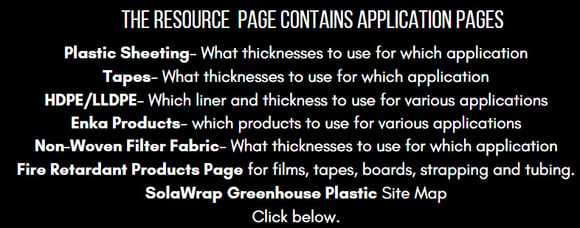Click to call from your cell: +17605979298
- Proudly Supporting American-Made Plastic Sheeting Since Day One
- HOME
- PRODUCT CATEGORIES
- CERTIFIED SMALL BUSINESS
- Aquaponics| Aquaculture| Hydroponics Films
- Anti-Static Fire Retardant Plastic Sheeting
- Fire Retardant -Films, Tapes, Fluted Boards- Strapping
- Geotextiles - Nonwoven Filter Fabric
- Greenhouse Plastic Sheeting
- Heat Shrink Wrap
- Heavy Duty Plastic Sheeting
- Reinforced Films
- Self-Adhesive Surface Protection
- Tapes
- Vapor Retarders
- PRODUCTS BY INDUSTRY/APPLICATION
- Plastic Sheeting By Thickness
- Aerospace
- Agricultural
- Application Charts - Liners- Films- Tapes- Drainage
- Concrete Slab Floor Protection
- Containment
- Covers- Construction- Industrial- Recreational
- Athletic Field Covers
- Barn Covers
- Boiler Covers
- Construction Grade Plastic
- Contaminated Soil Covers
- Equipment Covers- Military- Heavy Duty
- Fire Retardant Covers
- Fumigation Tarps
- Geotextiles
- Grain Covers
- Gym Floor/ Floor Covers
- Hay Covers
- Heat Shrinkable Covers
- Landfill Covers
- Livestock/ Greenhouse Curtains
- Livestock/ Greenhouse Curtains
- Pallet Covers
- Prairie Dog Barriers
- Storage, Stockpile & Equipment Covers
- Crawl Space Vapor Barriers
- Drainage: EnkaMat- EnkaDrain- EnkaRetain
- Dust Partitions/ Curtains
- Greenhouse/ Nursery Plastic
- Fire Retardant Tapes
- Flame Retardant Films/ Plastic Rolls
- HDPE- Geomembranes
- LLDPE- Landfill-Water Retention
- Military Equipment Covers
- Power Generating Plants
- Protective Packaging Site Map
- Roof Vapor Retarder/Barrier
- Application Resource Page
- Scaffolding Tarps
- Griffolyn/ Armorlon String Reinforced Films
- Ship Building
- Slip and Slide
- Soil Stabiliation- Envirogrid
- Tapes- Specialty
- Under Slab Vapor Barriers
- Videos
- PRODUCTS
- Construction/ Building Films
- GREENHOUSE FILMS- VARIOUS OPTIONS
- TAPES/ STRAPPING
- LINE CARD
- WHOLESALE PRICING
- VIDEOS
- ADDRESS/ BUSINESS HOURS
- BLOG
- SEARCH OUR SITE
- CONTACT US 619 448 4439
- Made in the USA Plastic Sheeting!






